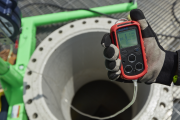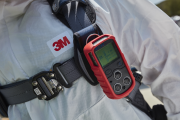 3M™ Gas & Flame Detection is warning that any businesses or public services that do not comply with newly updated workplace/occupational exposure limits to chemical agents could potentially face stern consequences, including prosecution. August 2018 saw the deadline pass for compliance with the revised EU Directive 2017/164/EU. However, for any businesses that remain concerned, 3M™ Gas & Flame Detection is offering help to ensure the regulations are met.
3M™ Gas & Flame Detection is warning that any businesses or public services that do not comply with newly updated workplace/occupational exposure limits to chemical agents could potentially face stern consequences, including prosecution. August 2018 saw the deadline pass for compliance with the revised EU Directive 2017/164/EU. However, for any businesses that remain concerned, 3M™ Gas & Flame Detection is offering help to ensure the regulations are met.
Indicative occupational exposure limit values (IOELV) are health-based, non-binding values, derived from the most recent scientific data available, taking into account the availability of reliable measurement techniques. For any chemical agent for which an IOELV has been set at EU level, Member States are required to establish a national occupational exposure limit. In the UK, for example, EH40 Workplace exposure limits from the Health and Safety Executive (HSE) have been updated directly in line with EU Directive 2017/164/EU. In the latest version of EH40, which also became active in August 2018, new limits have been introduced for 31 substances.
“The updated regulations set out the latest IOELV limits, which have been established in relation to a reference period of 8 hours – considering a time-weighted average – and referred to as long-term exposure limit values,” explains Neil Gwinnutt, UK & Ireland Sales Manager, 3M™ Personal Safety Division – Portable Gas Detection. “In addition, for certain chemical agents, shorter reference periods exist, in general 15 minutes [also time-weighted averages], referred to as short-term exposure limit values. In line with the ongoing desire to create safer workplaces, IOELV limits have inevitably tightened in the updated regulations, which means any business that believes it was working safely to previous limits, may now be exceeding them.”
 By way of example, consider carbon monoxide (CO), which is an extremely common byproduct of many industrial processes such as wastewater treatment, steelmaking, forging, chemical production, and oil and gas extraction. The 8-hour exposure limit for CO has been reduced from 30ppm to 20ppm, while the 15 minute exposure limit has been tightened from 200ppm to 100ppm.
By way of example, consider carbon monoxide (CO), which is an extremely common byproduct of many industrial processes such as wastewater treatment, steelmaking, forging, chemical production, and oil and gas extraction. The 8-hour exposure limit for CO has been reduced from 30ppm to 20ppm, while the 15 minute exposure limit has been tightened from 200ppm to 100ppm.
“The changes in CO limits also have an impact on the working practices of fire brigades and heating engineers, for instance,” says Mr Gwinnutt Another common gas, hydrogen cyanide (HCN), which is found widely in the plastics manufacturing industry, has seen a new 8-hour exposure limit introduced at 0.9ppm, while its 15 minute exposure limit has been reduced from 10ppm to 4.5ppm.
“New limits have also been introduced for nitrogen dioxide (NO2) and nitric oxide (NO), which are commonplace in the rail industry due to the diesel produced by locomotives,” says Mr Gwinnutt. “As a result, rail companies need to ensure that any engineers working in maintenance depots or in tunnels are not exposed to levels beyond those stated.”
 The long-term effects on health resulting from exposure to chemical agents are well documented. Any employers contravening the new exposure limits could not only be risking the health and safety of their team, but find themselves subject to prosecution. To help avoid this situation, 3M™ Gas & Flame Detection is urging any concerned employers to get in touch. The Application Engineering group at 3M™ Gas & Flame Detection offers complete end-to-end consulting, from design, through to equipment specification, installation recommendations, maintenance and service.
The long-term effects on health resulting from exposure to chemical agents are well documented. Any employers contravening the new exposure limits could not only be risking the health and safety of their team, but find themselves subject to prosecution. To help avoid this situation, 3M™ Gas & Flame Detection is urging any concerned employers to get in touch. The Application Engineering group at 3M™ Gas & Flame Detection offers complete end-to-end consulting, from design, through to equipment specification, installation recommendations, maintenance and service.
3M™ Gas & Flame Detection brings together industry-leading products from Detcon, Simtronics, Oldham and GMI to provide customers with fixed-point and portable gas detectors and controllers with proven reputations for quality and reliability. The products satisfy most international certification standards, including ATEX, SIL (Safety Integrity Level), CSA, Marine, IECEx and others.
For more information, contact our team of experts: gasandflamedetection@mmm.com or visit our website http://gasdetection.3M.com




